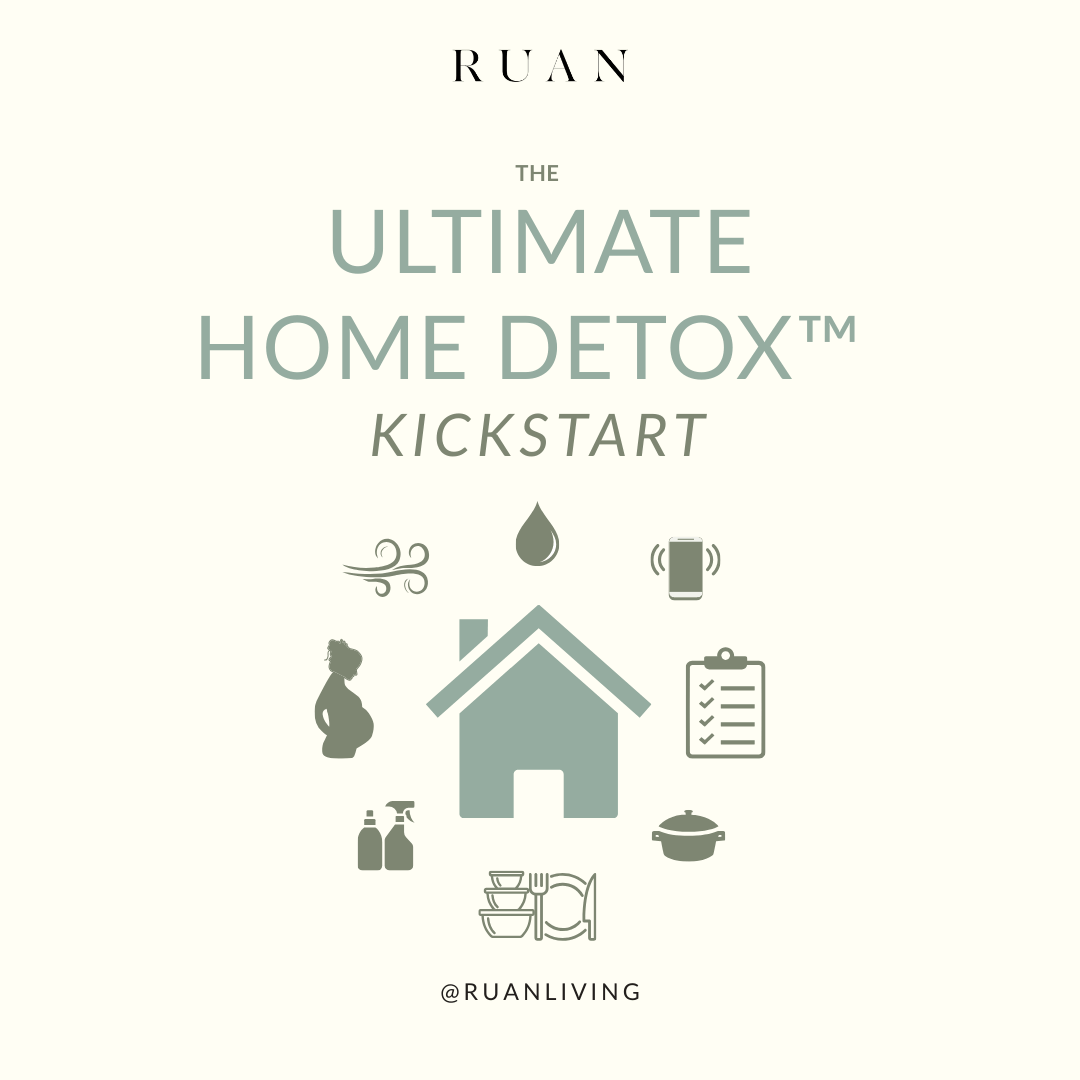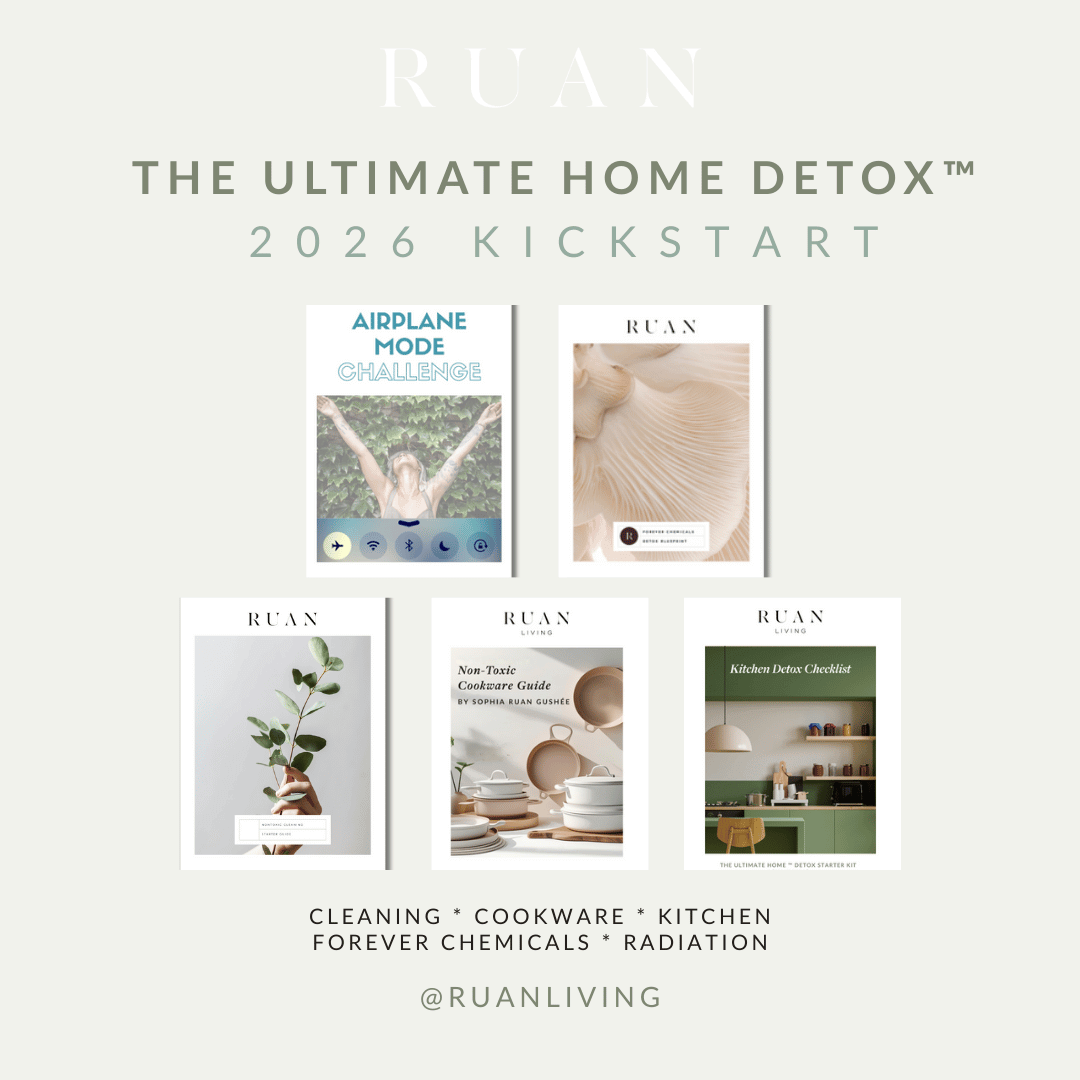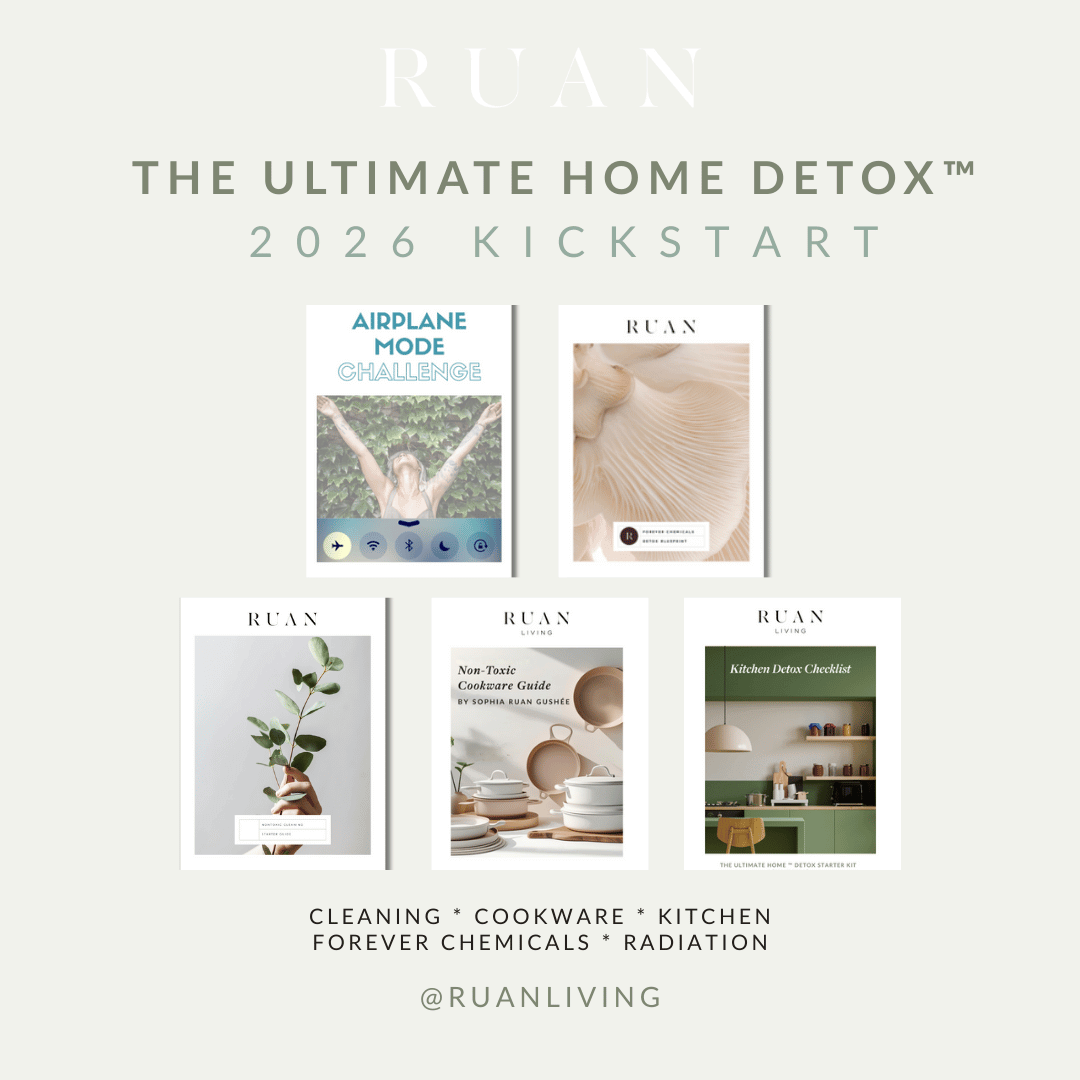
Toxic Bean Bags? Healthier Fabrics & Fillings You Should Know About
Jul 11, 2025Discover what makes most bean bags a hidden source of toxic exposures—and how to choose safer materials like hemp, linen, kapok, and buckwheat. Inspired by a real-life decision with my daughter, this post shows how to apply nontoxic principles to everyday home purchases.
Table of Contents
- Practical Nontoxic Living™ episode 110 "Toxic Bean Bags? What to Know About Safer Fabrics and Fillings for Your Home"
- Why Most Bean Bags Are Toxic
- What to Look for in Safer Bean Bag Covers
- Best Non-Toxic Bean Bag Fillings
- Understanding TB 117 and SB 1019
- What to Look for When Buying a Non-Toxic Bean Bag Chair
- Helping Kids Choose Safer Bean Bags (Without Compromise)
- How to Detox Your Furniture: A Step-by-Step Guide with Podcast Resources
Practical Nontoxic Living™ Episode 110
When my daughter asked for a bean bag for her bedroom, I wished I could have answered with an easy yes. But as someone deeply invested in Practical Nontoxic Living™, I knew I had to pause.
Most bean bags are made with synthetic textiles and plastic or foam fillings—major sources of indoor air pollution and hidden toxic exposures in the home. These materials off-gas harmful chemicals, including flame retardants, VOCs (volatile organic compounds), and endocrine-disrupting compounds. So this simple request quickly turned into a home detox decision.
Listen to my personal experience with responding to my daughter's request to buy a toxic bean bag for her bedroom.
Why Most Bean Bags Are Toxic: Hidden Chemicals in Fabric and Filling
The problem lies in what they’re made of:
-
Textiles: Most bean bag covers are made from polyester, microfiber, nylon, faux leather, vinyl, other synthetic fabrics, or blended fabrics. They're often treated with chemical finishes like stain repellents, antimicrobial coatings, or flame retardants.
-
Filling: The inner filling is often expanded polystyrene beads or polyurethane foam—both of which are toxic, petroleum-derived materials. These are well-known Household Repeat Offenders, a concept I explain in A to Z of D-Toxing and highlight in Ruan Living's 40-Day Home Detox program.
Textiles, plastics, and foam are among the most common hidden sources of toxicity in our homes, which is why we call them Household Repeat Offenders. When you become familiar with these common culprits, it becomes much easier to identify and avoid them in everything from bean bags to mattresses to carpets and rugs to furniture to baby products.
Best Non-Toxic Bean Bag Materials: Hemp, Kapok, Buckwheat & Latex
With toxic textiles fresh in my mind from recent podcast episodes and while working on my Nontoxic Fabrics Cheat Sheet for the D-Tox Academy, I knew I wanted a truly safe and natural textile.
Most Sustainable Fabrics for Bean Bags: Hemp, Linen, and More
From Practical Nontoxic Living podcast episode 105 with Patty Grossman, co-founder of Two Sister Ecotextiles, who was recommended by Debora Dimare, author of Vegan Interiors and beloved masterclass expert in Ruan Living's 40-Day Home Detox, I knew that untreated hemp or linen fabric was ideal. They are durable, breathable, often grown with fewer pesticides, have a relatively low carbon footprint, and can be found with no chemicals.
| Fabric (untreated) | Carbon Footprint | Water Use | Chemical Use | Sustainability Rank |
|---|---|---|---|---|
| Hemp | Very Low | Very Low | Very Low | ✅ Excellent |
| Linen (Flax) | Low | Low | Low | ✅ Excellent |
| Organic Cotton | Medium | High | Low | 👍 Good (but water-intensive) |
| Conventional Cotton | High | Very High | High | ❌ Poor |
| Polyester | Very High | Low | Very High | ❌ Very Poor |
Best Non-Toxic Bean Bag Fillings: Kapok, Buckwheat, and Natural Latex
Nontoxic filling materials include natural kapok, buckwheat, and natural latex.
-
Kapok fiber: A soft, cotton-like natural fiber from the kapok tree that is lightweight (feels plush and cloud-like but can feel supportive), biodegradable, and finding them free from synthetic processing is easier to find.
-
Buckwheat hulls: A supportive and moldable filling made from natural grain hulls—popular in meditation cushions and pillows. They are generally natural, renewable, and biodegradable byproduct of buckwheat processing.
-
Natural latex: Sustainably harvested from rubber trees, natural latex foam is soft, springy, supportive long-lasting, and free of toxic flame retardants (when properly sourced). Known for being more buoyant and springy than memory foam, adapting quickly to movement while still offering good support, shredded natural latex filling can also feel lumpy.
Based on my experience with nontoxic pillows, I think a kapok- or buckwheat-filled bean bag chair would offer the most comfort while supporting a clean indoor environment. I haven’t tested these fillings in a bean bag form yet, but I have in pillows. You can adjust your firmness and support by adding or subtracting filling materials. They’re promising, healthier alternatives to conventional foam.
What Is TB 117-2013?
When shopping, also look for TB 117 on bean bag labels or manufacturer product information. TB 117-2013 compliance refers to the updated version of California Technical Bulletin 117, a fire safety regulation that sets flammability standards for upholstered furniture—including bean bags, couches, and mattresses.
Originally enacted in 1975, TB 117 required foam and filling materials to resist an open flame. To meet that standard, manufacturers often added toxic chemical flame retardants—many of which are linked to cancer, hormone disruption, and neurological issues.
What Changed in 2013?
In 2013, California revised the rule to create TB 117-2013, which no longer requires flammability to be achieved using chemical additives. Instead, it allows materials to pass the flammability test using:
-
Fabric barriers
-
Smolder-resistant outer materials
-
Or design changes—without toxic flame retardants.
Does TB 117-2013 Matters When Shopping?
A product labeled “TB 117-2013 compliant” doesn’t automatically mean it’s free of flame retardants. It only means it can be. That’s why you should look for:
-
Labels or documentation stating “NO added flame retardants”
-
Sellers who confirm compliance without the use of chemical flame retardants
Understanding SB 1019: Flame Retardant Labeling Law for Furniture
If you’re shopping for a non-toxic bean bag chair or other upholstered furniture, one label you should always check is the one required by California Senate Bill 1019 (SB 1019).
SB 1019, enacted in California in 2014, is a law that requires all upholstered furniture sold in the U.S. (not just California) to carry a clear label stating whether or not the item contains added flame retardant chemicals. These chemicals have been linked to a range of health concerns, including hormone disruption, cancer, and neurological issues.
Did You Know About SB 1019?
California’s SB 1019 requires upholstered furniture to carry a label stating whether it contains added flame retardant chemicals.
The label will say something like: “This product contains [or does not contain] added flame retardant chemicals.”
This law doesn’t ban the chemicals—but it gives you the right to know what’s inside your bean bag, couch, or chair.
✅ Look for:
Products that say “does not contain added flame retardants” and meet TB 117-2013 flammability standards without toxic additives.
Have upholstered furniture manufactured before 2015? Most likely, it contains untested chemical flame retardants. Keep in mind that, starting in 2020, a California law bans the sale of new upholstered furniture, juvenile products, and mattresses containing most flame retardant chemicals. (Green Science Policy)
Many safer options comply with flammability laws by using smarter design and natural materials—like kapok, natural latex, hemp, and untreated organic cotton—rather than relying on chemical flame retardants.
What to Look for When Buying a Non-Toxic Bean Bag Chair
In summary, this is how to buy a non-toxic bean bag:
- Safe bean bag chair materials include hemp untreated or linen fabrics. Ideally, they're GOTS-certified fabrics (Global Organic Textile Standard). The second best certification for fabrics is OEKO-TEX® Made in Green. Next best is Oeko-Tex Standard 100–certified textiles (tested for harmful substances). But even if they're not certified, hemp or linen tend to be better options.
- Confirm with the manufacturer that the bean bag that you want to buy are TB 117-2013 compliant without added flame retardants
- Safer bean bag filling includes kapok, buckwheat, and natural latex with no added chemicals
Bean Bag Fabric Toxicity Comparison
| Fabric Type | Toxicity Risk | Common Chemical Concerns | Recommended? |
|---|---|---|---|
| Polyester (incl. microfiber/microsuede) | High | VOC off-gassing, PFAS coatings, flame retardants, toxic dyes | No |
| Nylon | High | Flame retardants, PFAS, VOCs, toxic dyes | No |
| Faux Leather (PVC/PU) | High | Phthalates, lead, VOCs, toxic dyes | No |
| Vinyl | High | Endocrine disruptors, phthalates, VOCs, toxic dyes | No |
| Poly-cotton Blends | Medium | Unclear chemical treatments, toxic dyes | Use with caution |
| Organic Cotton (untreated) | Low | Minimal if untreated and certified | Yes |
| Hemp (untreated) | Low | Minimal, naturally mold-resistant | Yes |
| Linen (untreated) | Low | Minimal if untreated | Yes |
| GOTS-Certified Fabric | Low | Tested and certified for low toxicity | Ideal |
| Oeko-Tex Made In Green Certified Fabric | Low | Tested for harmful substances | 2nd best |
Helping Kids Choose Safer Bean Bags (Without Compromise)
The bean bag that my daughter selected—made with synthetic materials and filled with petroleum-based ingredients. Instead of shutting it down, I turned it into a collaborative process. I’m currently searching Etsy for a maker who can create a custom hemp bean bag cover that aligns with her style. I’ll then buy the natural filling separately.
This experience is a great example of how the Household Repeat Offenders framework empowers real-life decisions. And more importantly, it becomes a teaching moment. Our conversations around textiles, foam, and off-gassing are not just about this one bean bag—they’re raising her awareness of toxins in furniture, bedding, clothing, and more.
How to Detox Your Furniture: A Step-by-Step Guide with Podcast Resources
If you’re curious about how to identify and eliminate toxic exposures from everyday household items, explore these podcast episodes and resources:
- Download the Nontoxic Bean Bags Checklist.
- Listen to Practical Nontoxic Living™ podcast:
- Episode 105: Toxic Textiles: Simple Steps to Detox the Fabrics in Your Home
- Episode 106: The Best Nontoxic Fabrics for Clothing, Bedding, Curtains, Rugs, Carpets, and Upholstered Furniture
- Episode 84: Household Repeat Offenders: The Simplest Way to Reduce Toxic Chemicals, Heavy Metals, EMFs & Stress
- Episode 67: 40-Day Home Detox
- Join the newsletter at Ruan Living Newsletter to be updated on when the Nontoxic Fabric Checklist is available at the D-Tox Academy
- Buy A to Z of D-Toxing: The Ultimate Guide To Reducing Our Toxic Exposures (Amazon affiliate link) to learn more about Household Repeat Offenders including textiles, foam, and plastics.
- Follow @ruanliving on Instagram or other social media platforms
Note: Episode 108 is a Practical Nontoxic Living™ Raindrop. These simple—brief and raw—episodes are drops of practical wisdom from Sophia's life. They are part of the occasional Thursday Ultimate Home Detox™ Unpacked series. Learn more at the Ruan Living blog and the Practical Nontoxic Living podcast episode 90: Introducing Raindrops of Practical Nontoxic Living™.



